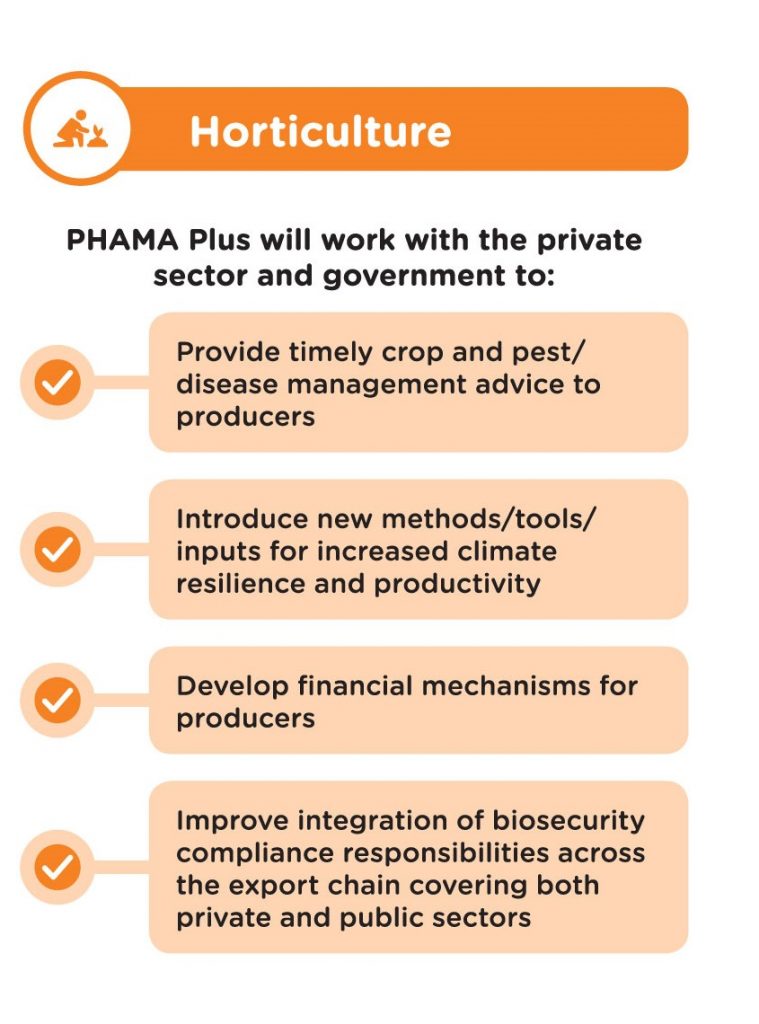Horticulture
PHAMA Plus builds on the work of PHAMA and aims to continue to increase the export of horticulture produce (cucurbits) from Tonga that meets consistency and quality specifications of the importing countriesby improving household income form more than 1,000 households.
PHAMA assisted Tonga in gaining access to the China market for squash in 2017, in addition to maintaining existing markets in Japan and Korea. Due to PHAMA’s support 1,500 tonnes of squash were expected to reach China in 2018. The Program assisted Tonga to regain, and maintain, market access for watermelon in New Zealand, following an audit conducted by New Zealand’s Ministry of Primary Industries (MPI) in 2017. Results of PHAMA investments in watermelon export can also be seen from 2010 onwards. Demand for Tongan squash and watermelon is increasing but Tonga is not able to meet this demand: the demand for squash is at least 5,000 MT for the Japan and Korean markets and with the new market opening up in China, total export demand is expected to be 7,000 MT and up to 10,000 MT a year, with China’s demand being half of this amount. Up to 95% of watermelon exports go to New Zealand with New Zealand market demand 1,000 MT annually. Tonga could only supply between 100 MT –400 MT in recent years. Samoa is also opening as a new export market, but quantities exported are still low.
The existence of the Nishi Trading packhouse which is a modern, automated and HACCP-accredited packhouse, available to other exporters, with capacity to process some of these export products is an enabler for increased exports. Not many households benefit from export opportunities or are part of an export pathway. The majority (around 80%) of watermelon is sold in the domestic market, there are some producers that are very capable of complying with watermelon export protocols so they can export their produce and increase incomes. The majority of households are involved in cropping (10,296 households or 57% of all households), with most growing various traditional crops such as root crops and fruit crops, and a reasonable number growing quick cash crops such as watermelon and squash, the number of households growing cucurbits for export is relatively low, estimated around 210, or 2% of those involved in cropping.
There is potential as demand is growing, to expand to around 1,000 households4, which is the number of households that were producing for export to Japan and Korea ten-fifteen years ago. There are incentives for producers to enter export pathways. Although required skills and levels of investment to manage these crops are higher than for traditional root crops (or other crops5), the returns are also higher.


